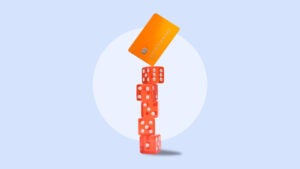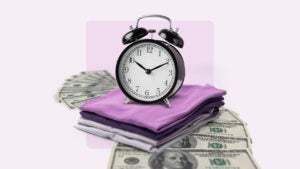Survey: About half of buy now, pay later users have experienced issues like overspending and missing payments

Burdened by inflation and stubborn rates, many consumers are tightening their budgets and turning to payment methods to spread out their cash flow. The appeal of buy now, pay later (BNPL) is strong, with easier access to credit, predictable payment plans and no interest rate.
BNPL doesn’t come without its problems. Bankrate’s new Buy Now, Pay Later Survey found that about half of BNPL users have encountered at least one issue, including missing a payment or overspending.
BNPL can be a good deal if you use it responsibly. It provides access to credit and can help users smooth out their cash flow. But sometimes it can lead to overspending, and you would have been better off waiting until you could pay for the item upfront.— Ted Rossman, Bankrate Senior Industry Analyst
The study suggests that people can use BNPL strategically, but it’s best used as a helpful financial tool when paired with good financial habits. The ability to buy on impulse and break costs down into more digestible payments can muddy the terms of the service and the true cost of the product. It takes patience and planning when using these services to avoid paying for it later — in more ways than one.
- Almost one-third of Americans have used BNPL: 30 percent of U.S. adults say they have used at least one buy now, pay later service. PayPal Pay in 4/Pay Later (15 percent), Affirm (11 percent), Afterpay (9 percent) and Klarna (9 percent) are among the most widely used services.
- About half of users experienced issues related to the service: 49 percent of users say they experienced at least one problem while using a BNPL service. Overspending (24 percent), missing payments (16 percent) and regretting a purchase (15 percent) are among the most common ones.
- Spreading out cash flow is the main reason for BNPL usage: 57 percent of users chose this payment method to stretch their cash flow — more than any other reason. The appeal of low/no interest rates came in second at 40 percent.
- Gen Zers are the most likely to have encountered issues: 66 percent of Gen Zers reported experiencing at least one issue while using BNPL — the largest percentage across generations.
- BNPL usage was relatively consistent across all income levels: 31 percent of Americans in both the highest annual household income brackets and lowest brackets have used BNPL at least once.
We reached out to Afterpay, American Express, Klarna and PayPal for comment on the state of the BNPL, but the companies declined to comment or did not respond at the time of this writing. A spokesperson for Affirm replied and advised potential borrowers to make sure they understand their terms, as no two BNPL options are the same.

Bankrate Data Center
Since 1976, Bankrate has been the go-to source for personal finance data, publishing average rates on the most popular financial products and tracking the experience of consumers nationwide.
See more30 percent of Americans have used at least one BNPL service
The concept of buy now, pay later has existed since the 1800s, moving from installment plans to layaway programs and credit cards. Now with the boom in online shopping, BNPL apps and services have become more popular. The survey found that 30 percent of Americans have used at least one BNPL service.
While there are several companies in the space, there are four that rank highest in popularity, according to Bankrate. When asked, “Which BNPL have you ever used?”, more customers said:
- PayPal Pay In 4/Pay Later (15 percent)
- Affirm (11 percent)
- Afterpay (9 percent)
- Klarna (9 percent)
There are other BNPL companies, such as traditional credit card brands, but these products aren’t as popular among Americans as new fintechs. Only three percent of users have used American Express Plan It and/or Chase Pay Over Time (formerly My Chase Plan). While four percent of Americans have used Apple Pay Later, that service no longer exists since it was shuttered in June 2024.
BNPL usage was about the same across income levels
With many Americans living paycheck to paycheck, BNPL can be a financing option when money is tight, but lower-income earners aren’t the only ones using the service. With websites, apps and even debit cards, BNPL services make payment accessible and convenient for users, regardless of income. With BNPL options available at checkout, the services meet customers where they are.
Bankrate’s findings show that BNPL usage is consistent across all income levels with slight differences. The survey found that usage between the highest annual household income bracket ($100,000+) and the lowest (under $50,000) were the same at 31 percent.
| Annual household income | Percent that have used BNPL |
|---|---|
| Under $50,000 | 31% |
| $50,000 to $79,999 | 36% |
| $80,000 to $99,999 | 34% |
| $100,000 or more | 31% |
57 percent of users used a BNPL service to pay in installments
As its name suggests, BNPL allows you to make a purchase when you want to and pay it off later, typically through smaller, interest-free payments over a short period of time, making it extremely popular. Among all users, 57 percent used the service because they wanted to pay in installments. This is the most popular reason among baby boomers (69 percent among those 61-79), a generation that includes retirees living on a fixed income.
The appeal of BNPL goes beyond smaller payments. Additional reasons for using BNPL included low or no interest rate (40 percent), payment predictability (31 percent) and the ease of obtaining credit (26 percent).
Being able to spread the payment out, a low (or no) interest rate and the ability to obtain credit were the top three reasons millennials (age 29-44) and Gen Zers (age 18-28) used this service. These two generations were also the ones to use BNPL the most, with 38 percent of Gen Z and 37 percent of millennials using at least one service.
Those who fall into this group are likely early in their professional careers, have younger credit histories and may be more tech-savvy than older generations. They’re also some of the most active on social media, a space on the internet riddled with posts and ads that lead to impulse purchases. According to Bankrate’s Social Media survey, 48 percent of social media users say they have impulsively purchased a product they saw on social media.
49 percent of users have experienced problems related to the service, particularly Gen Z
Of the U.S. adults who have used a BNPL service, 49 percent said they have experienced at least one problem. Most issues were related to a user’s experience post-purchase, not necessarily technical issues encountered while using a specific app, showing the bigger problems of BNPL.
The most common issues users experienced were spending more than they should have (24 percent), missing a payment (16 percent) and regretting a purchase (15 percent).
Gen Z users of BNPL services are by far more likely to have experienced problems with 66 percent of users facing at least one issue related to the service. Fifty-seven percent of millennials have also had trouble when using BNPL.
Conversely, older generations seem to have a better experience. Over half of Gen Xers (64 percent) and boomers (69 percent) said they hadn’t faced any issues related to the service.
Overspending was the most common issue across all generations and income levels
Overspending was the most common issue for BNPL, regardless of income or age.
There are a few ways BNPL can lead to overspending, including the following:
Gen Z was most dissatisfied with a BNPL purchase
Of those who have used a BNPL, Gen Z were most likely to have experienced problems, with 26 percent saying they regretted a purchase and 18 percent saying they were dissatisfied with at least one purchase or experience.
-
Millennials: Seventeen percent regretted a purchase and 12 percent were dissatisfied with at least one purchase or experience.
-
GenX: Nine percent regretted a purchase, and 9 percent were dissatisfied with at least one purchase or experience.
- Baby Boomers: Eight percent regretted a purchase, and 9 percent were dissatisfied with at least one purchase or experience.
6 tips for avoiding common BNPL issues
Many BNPL problems can be better avoided by practicing smart financial habits with every purchase.
Methodology
The Buy Now Pay Later Survey has been conducted using an online interview administered to members of the YouGov Plc panel of individuals who have agreed to take part in surveys.
All figures, unless otherwise stated, are from YouGov Plc. The total sample size was 2,354 U.S. adults, of whom 707 have used Buy Now, Pay Later services. Fieldwork was undertaken between March 19th-21st, 2025. The survey was carried out online and meets rigorous quality standards. It gathered a non-probability-based sample and employed demographic quotas and weights to better align the survey sample with the broader U.S. population.






